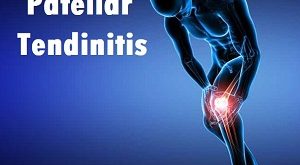Definition
Preeclampsia is defined as the presence of a systolic blood pressure (SBP) greater than or equal to 140 mm Hg or a diastolic blood pressure (DBP) greater than or equal to 90 mm Hg or higher, on two occasions at least 4 hours apart in a previously normotensive patient. If the preeclampsia remains untreated, it can develop into eclampsia, in which the mother can experience convulsions, coma, and can even die. However, complications from preeclampsia are extremely rare if the mother attends her prenatal appointments.
Pathophysiology
The pathophysiology of preeclampsia likely involves both maternal and fetal/placental factors. Abnormalities in the development of placental vasculature early in pregnancy may result in relative placental underperfusion/hypoxia/ischemia, which then leads to release of antiangiogenic factors into the maternal circulation that alter maternal systemic endothelial function and cause hypertension and other manifestations of the disease (hematologic, neurologic, cardiac, pulmonary, renal, and hepatic dysfunction). However, the trigger for abnormal placental development and the subsequent cascade of events remains unknown.
Causes pertaining to Preeclampsia
Potential causes are being explored. These include:
- Genetic factors
- History of diabetes, kidney disease, lupus, or rheumatoid arthritis
- Blood vessel problems
- Insufficient blood flow to the uterus
- Genetics plays a role, as well
- Autoimmune disorders
Risk factors for Preeclampsia
There are also risk factors that can increase your chances of developing preeclampsia. These include:
- Being pregnant with multiple fetuses
- Being over the age of 35
- Being in your early teens
- Being pregnant for the first time
- Being obese
- Nulliparity
- Multifetal pregnancy
- Thrombotic disorders (eg, antiphospholipid antibody syndrome)
- Having a history of high blood pressure
- Having a history of diabetes
- Having a history of a kidney disorder
- History of lupus, or rheumatoid arthritis
Clinical manifestations of Preeclampsia
Signs and symptoms of preeclampsia include:
- Changes in vision, like blurriness, flashing lights, seeing spots or being sensitive to light
- A headache that doesn’t go away
- Nausea (feeling sick to your stomach), vomiting or dizziness
- Pain in the upper right belly area or in the shoulder
- Sudden weight gain (2 to 5 pounds in a week)
- Swelling in the legs, hands or face
- Trouble breathing
- Decreased urine output
- Decreased levels of platelets in your blood (thrombocytopenia)
- Excess protein in your urine (proteinuria)
- Impaired liver function
Many of these signs and symptoms are common discomforts of pregnancy.
Complications associated with Preeclampsia
- Fetal growth restriction or fetal death may result. Diffuse or multifocal vasospasm can result in maternal ischemia, eventually damaging multiple organs, particularly the brain, kidneys, and liver.
- Factors that may contribute to vasospasm include decreased prostacyclin (an endothelium-derived vasodilator), increased endothelin (an endothelium-derived vasoconstrictor), and increased soluble Flt-1 (a circulating receptor for vascular endothelial growth factor).
- Women who have preeclampsia are at risk of abruptio placentae in the current and in future pregnancies, possibly because both disorders are related to uteroplacental insufficiency.
- The coagulation system is activated, possibly secondary to endothelial cell dysfunction, leading to platelet activation.
- The HELLP syndrome (hemolysis, elevated liver function tests, and low platelet count) develops in 10 to 20% of women with severe preeclampsia
Diagnosis and Test
All women who present with new-onset hypertension should have the following tests:
- CBC
- Serum alanine aminotransferase (ALT) and aspartate aminotransferase (AST) levels
- Serum creatinine
- Uric acid
- 24-hour urine collection for protein and creatinine (criterion standard) or urine dipstick analysis
Additional studies to perform if HELLP syndrome is suspected are as follows:
- Peripheral blood smear
- Serum lactate dehydrogenase (LDH) level
- Indirect bilirubin
Imaging Techniques
- Ultrasonography: Transabdominal, to assess the status of the fetus and evaluate for growth restriction; umbilical artery Doppler ultrasonography, to assess blood flow
- Cardiotocography: The standard fetal nonstress test and the mainstay of fetal monitoring
- Head CT scanning is used to detect intracranial hemorrhage in selected patients with any of the following:
- Sudden severe headaches
- Focal neurologic deficits
- Seizures with a prolonged postictal state
- Atypical presentation for eclampsia
Treatment and Medications for Preeclampsia
- Preeclampsia has no cure except for delivery of the baby. However, delivery may not always be the best option at the time preeclampsia is diagnosed. The treatment that the patient receives depends on the severity (mild versus severe) of the associated symptoms and the stage of the pregnancy.
- Close monitoring of the woman and her fetus will be needed. Tests for the mother might include blood and urine tests to see if the preeclampsia is progressing, such as tests to assess platelet counts, liver enzymes, kidney function, and urinary protein levels. Tests for the fetus might include ultrasound, heart rate monitoring, assessment of fetal growth, and amniotic fluid assessment.
- Anticonvulsive medication, such as magnesium sulfate, might be used to prevent a seizure.
- Some of the medications used for stroke include labetalol, nifedipine or methyldopa.
Natural or Home Remedies
Lemon
If you are used to its juice, you have already found a wonderful way to hydrate your body, in addition to water. Get fresh lemon juice and combine it with warm water. Drink the mixture 2-3 times on a daily basis.
Ginger
One surprising fact about ginger root is that it prevents inflammation and swelling very effectively. Ginger has stimulating effects on blood circulation, which means that your baby will get more blood and oxygen as well.
- Prepare several fresh ginger slices.
- Mix them into warm water and boil them in several minutes.
- Continue to steep them in the next 15 minutes.
- Get it strained.
- The warm tea can be consumed 2-3 times daily.
Garlic
Garlic is one of some natural foods with the greatest effects on high blood pressure. Our body has the higher level of hydrogen sulfide and nitric oxide. These substances possess relaxing effects on our blood vessels, which means that preeclampsia pain is under control.
- Get several fresh garlic cloves grinded.
- Then, combine garlic powder (about 3 teaspoons) with a cup of water.
- Boil them for a few minutes before steeping in the next 20 minutes.
- Strain the mixture
Beet
Being an excellent source of calcium, beet plays an important role in maintaining the balance of potassium and sodium in our blood. You should consume fresh beet juice by blending it every day to benefit the most from this natural ingredient.
Vitamin C
Vitamin C plays an essential role in human health, not to mention pregnant women. It is the key to a strong immunity, which ensures a lower risk of different infections. You can go for tomatoes, cabbage, potatoes, strawberries, bananas or citrus fruits.
Potassium
Among various nutrients, potassium is one of many irreplaceable. The appearance of potassium-rich foods in meals is a great suggestion for those who want to prevent preeclampsia. Some outstanding examples of these foods are bananas, avocados, chicken or beans.
Vitamin E
Another type of vitamin that is required in the treatment and prevention for preeclampsia is vitamin E. It is effective to improve blood circulation and reduce the risk of swelling. According to the National Institute of Health, pregnant women should take in about 15 mg on a daily basis. Vitamins E can be found in a variety of foods, for example, almonds, corn or fish.
Acupuncture
Acupuncture has great influence on the blood circulation inside our body, which reduces the risks of high blood pressure significantly. Of course, it should be applied only with the help of professionals. And you had better not abuse this method to cope with preeclampsia pain. Every time you intend to do this, please talk to your doctor for the best advice.
Prevention of Preeclampsia
- Maintain a Healthy Weight
- Get Regular Exercise: The benefits of exercise during pregnancy include reduced inflammation, help to reach and to maintain a healthy weight, and even defense against the effects of stress
- Eat a Healing Diet to Reduce Blood Pressure Levels
- Prevent Dehydration and Fatigue
- Sleep is good for oh-so-many reasons, but it’s especially important for mama to get some rest.
- Get some sunshine! Low vitamin D is associated with preeclamptic women in a study in Ireland. (You can also eat vitamin D-rich foods such as sardines, egg yolks, grass-fed butter, or cod liver oil.)
 Diseases Treatments Dictionary This is complete solution to read all diseases treatments Which covers Prevention, Causes, Symptoms, Medical Terms, Drugs, Prescription, Natural Remedies with cures and Treatments. Most of the common diseases were listed in names, split with categories.
Diseases Treatments Dictionary This is complete solution to read all diseases treatments Which covers Prevention, Causes, Symptoms, Medical Terms, Drugs, Prescription, Natural Remedies with cures and Treatments. Most of the common diseases were listed in names, split with categories.








very nice , very much useful tips, Thanks
great tips
great tips, and very educative
I so much appreciates for this info,
what is the loading dose of magnesium sulphate?
Initial dose: 4 to 5 grams IV in 250 mL of appropriate diluent, with simultaneous IM administration of up to 5 grams (10 mL undiluted solution) in EACH buttock; total dose: 10 to 14 grams
-An initial IV dose of 4 grams may also be diluted to a 10% or 20% solution and injected IV over 3 to 4 minutes
Maintenance dose: 4 to 5 grams IM into alternate buttocks every 4 hours as needed
Let’s frequently check on the risk factors for preeclampsia such as high blood pressure on our loves